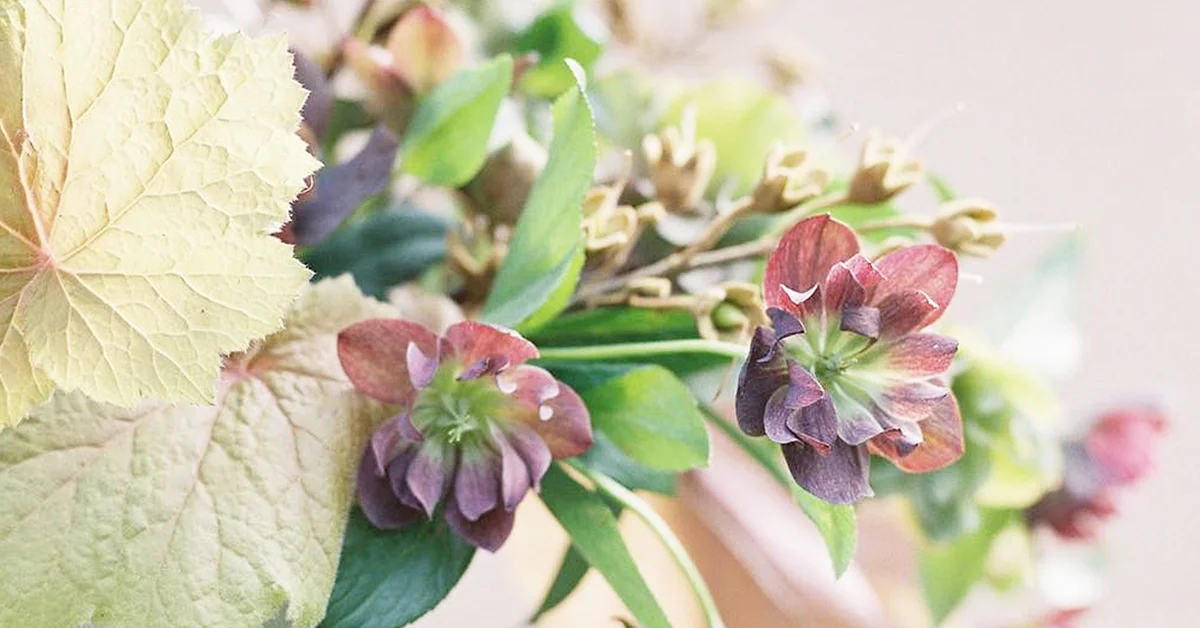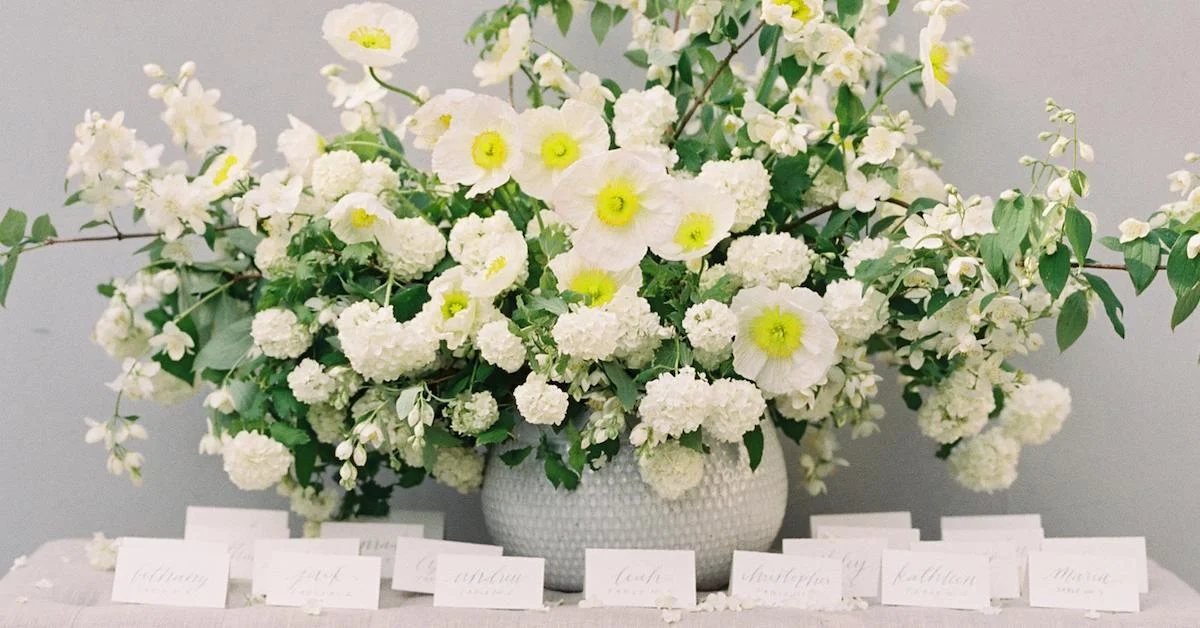Arrangement How-to in Flower Magazine
Today I'm sharing a floral tutorial I did for FLOWER called "Garden Philosophy."
Design School is my favorite part of FLOWER. There are always so many interesting, inspiring designs and designers featured there — Maria Maxit, Jonathan Andrew Sage, Erin Benzakien, Sybil Sylvester, Karin Woodward, Mimi Brown, Joy Thigpen, and Adri Smith to name a few!
You can connect with FLOWER founder, Margot Shaw, in person at the 2018 Team Flower Conference. For more inspiring stories visit their website and instagram @flowermagazine
May you find rest as you read and turn to your garden for elements to incorporate in your designs! I'd love to see your results on Instagram. Use the hashtag #weareteamflower!
Materials used
VESSLE
Measuring 7.5" x 5.25" this versatile waterproof compote is perfect for creating arrangements for dining tables, coffee tables or buffets. It's sturdy, easy to clean and can be used over and over again.
FLOWER FROG
Flowers love being arranged in fresh water! That is why we love using flower frogs (Amazon). Simply adhere to the compote using floral putty for a vessel that is ready to go at a moment's notice! Work from the outside of the flower frog to the inside to create a sturdy hold. The firm, yet flexible points accommodate all kinds of ingredients. Branches that are large can easily be inserted by trimming the end into a sharp point. To keep your flowers at optimal freshness, place the arrangement under the sink and flush old water out and new water into the dish daily.
Heather Payne Photography
FLORAL PUTTY
Floral putty (Amazon) is easy to use and provides a long-lasting hold for flower frogs. You can leave the frog in the container or, if you'd like to transfer the frog to another container, you can warm the putty and remove it with a little bit of elbow grease. Re-apply fresh putty and attach to your new vessel. It is important the vessel you are attaching it to is clean and dry. While you can use this with any type of material, you'll experience optimal results if the container you are adhering it to is ruffed up and textured a bit. It is also important there is a secure hold and no "leaks" where water could penetrate beneath the surface of the frog. This can cause it to loosen, especially in smooth glass containers.
(AMAZING!) CLIPPERS
They really should hire me to do an infomercial for these Joyce Chen clippers (Amazon)! They are truly amazing! They are versatile, easily cutting through fragile stems and branches alike. I've even used them to cut siding that is used on homes! Wire, silk ribbon — they can do it all! They are also lightweight and for someone like me who uses scissors for a living, this is key in avoiding hand fatigue. Handles are also flexible — an additional comfort.
WATERPROOF TAPE
Another helpful tool to keep nearby, we used this tape (Amazon) to train ivy in this arrangement. You can also use it to create a "tick-tack-toe" style grid on the top of a vessel as a way of supporting flowers. It's important the surface is clean and dry prior to applying.
Tips for cutting from your garden
- Quick Dip for hydrating garden blooms (Amazon). As the name suggests, just a "quick dip" in this solution after cutting stems allows them to absorb water and hydrate at lighting speed. Just a quick 3 second dip and you're good to go! Dehydration is the #1 suspect in droopy blooms and this is a miracle worker in almost every case.
- Cutting from more established plants generally means they will hold longer as a cut. For example hydrangea or dahlias cut early in the season are not as long-lasting as those cut later.
- If the flower feels soft, damp or sticky it generally will not hold very long as a cut. If it feels leathery, papery and dry it will generally be long-lasting.
- Cut from your garden early in the morning whenever possible. Like humans, flowers need a little time to rehydrate after a long day in the sun.
Arranging Overview
This arrangement came together in three layers with specific goals for each layer. As I choose and place the flowers I think about achieving the goals. There’s more than one way to reach them. Be inspired by what you see here, but don’t feel ruled. Do it your way. Adjust the flowers to whatever you have in your garden. I think you’ll find that substitutions will be easy as you understand the qualities and purpose of each flower. Simply look for things of a similar shape and size and substitute. And to free you further, it is nearly impossible to recreate exactly what you see here. Recreating this stem-by-stem isn't the point. It's about getting out there and enjoying your moment! This was my moment and what you create will be yours!
And, the most important thing to remember about arranging flowers is to smile at them as you do it. When you’re smiling they always smile back. Never be critical of your work. Never apologize for what you make. Just keep arranging and enjoying the process. Over time you’ll find your own way and invent your own tricks and tips. You can share the joy of arranging and pass it along to others just like my mom passed it along to me and I'm passing it on to you!
Layer One
The goal of this layer is threefold:
- Establish the shape and size of the arrangement.
- Cover the container rim and base.
- Add support for flowers in higher levels to rest.
Quick Tip: You’ll want all of the flowers in this layer to go into your flower frog. Work from the outside of the frog to the inside, being careful not to cross a stem over nails that could be used to secure more flowers. Some materials in the upper layers will make their way into the frog, but others will simply rest in the grid and pillow we create for them using the Blackberries, Bells of Ireland and Carnations.
Heather Payne Photography
Ingredients, Purpose, Possible Substitutions:
- Ivy, flexible vine, used to soften the base of the container, could be subbed for Love in a Puff, Sweet Autumn Clematis, Ground Pine or Jasmine.
- Ferns, tall/flat/structured, used to create shape/size, Solomon’s Seal and Forsythia have a similar leaf structure.
- Bells of Ireland, top flowers offer fun, graceful twists and turns and are used to add interest around the base of the container. The lower flowers are clipped and used for support.
- Allium’s rigid stems offer a touch of structure and the purple flower sets the tone for the rest of the flower choices.
- Geranium’s flat, ruffly leaf makes it a great choice for layering and covering the container rim. Lady’s Mantle and Coral Bell foliage can function similarly.
- Unripe Blackberries add a glossy texture and a “netting” higher in the arrangement. The frog catches the first pieces that go in, and some of the last, but the berries, bells and carnations catch all the pieces in between!
- Oregano was chosen for the purple vein running through its stem. When you are choosing flowers, take note of the colors on the stems, undersides, insides etc.
- Clematis offers a soft foliage and graceful nodding bells that round out the shape of the arrangement and carry color throughout. Bleeding hearts or sweet peas on the vine would be a great substitute.
- Carnations, dark color draws the eye deep into the arrangement, their fluffy shape work as the lower flowers of the Bells of Ireland, offering support.
Note: You could totally end your arrangement right here if you wanted! I love the minimalism, don't you? What got me really excited about this arrangement was actually the ferns. They are shown off so nicely here! The number of ingredients that you use and the levels you create will depend on the season and what is in your garden. This is another reason why I love this container and using the frog. It doesn't have to spill over with flowers to be beautiful and supported. You have the option of just highlighting a few things.
Layer Two
The goal of this layer is to "draw" an implied line that helps move the eye through the arrangement. An implied line is one that your eye creates using dots of color. Think of "connect the dots" — the white ranunculus in this arrangement are the dots. Your eye jumps from one to the next, creating movement. Curved lines are fun to draw! Let your imagination decide. Ranunculus is a medium sized round flower. Zinnias or mums could be used to fulfill the same goal in a similar arrangement.
Heather Payne Photography
Level Three
The goal of this layer is to create a resting place for the eye using a focal flower and finish the arrangement using “light” ingredients. Their gentle, wispy nature is the perfect way to add interest in the highest level of the arrangement. You can think about this level like walking into a room. Generally the ceiling is white and light and the floor is dark and made of a heavy material like wood or slate. The large flower (purple ranunculus) is the floor, visually heavy. The Forget-Me-Not, Lavender and Fritillaria are physically and visually light in comparison, like the ceiling.
Heather Payne Photography
Ingredients:
- Ranunculus, largest flower, acts as a focal point, a place for the eye to rest. Peonies, Garden Roses, Dahlias, Lilies and Amaryllis are great choices for focal flowers.
- Forget-me-not, light, small and meaningful.
- Lavender, velvety texture and fragrant.
- Fritillaria, light, graceful curves, nodding and delicate. Columbine and Scabiosa are similar.










